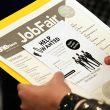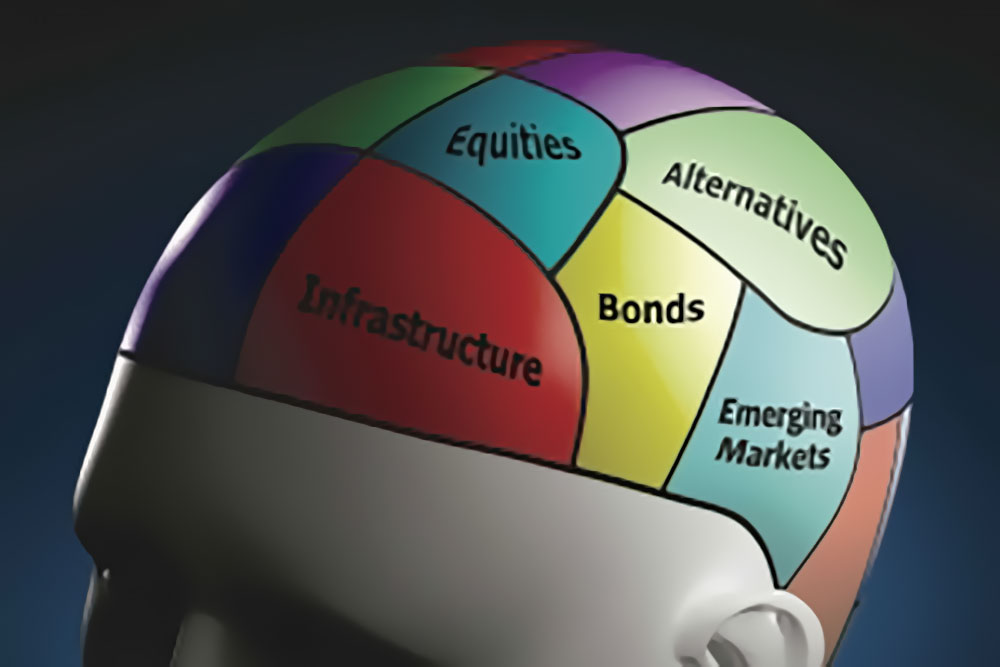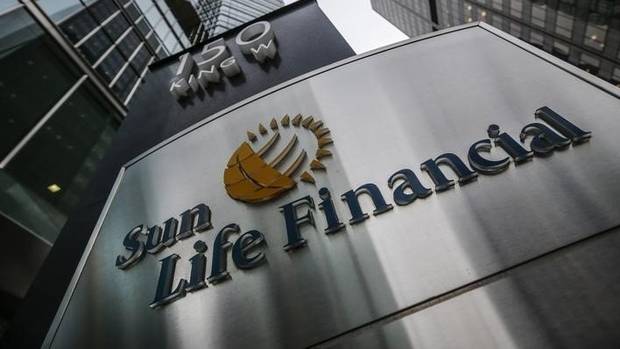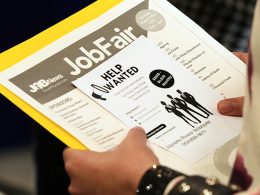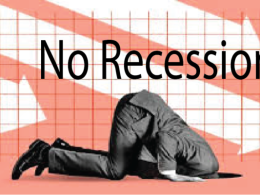by Michael Hasenstab, Ph.D., Franklin Templeton Investments
Here are some highlights of their conversation:
- “We [the United States] have a very divided country. It’s divided across racial lines, income lines, geographic lines, urban-rural lines. The next administration’s biggest challenge is how can we find the middle ground to create compromise to actually pass policy. And even when we look not just between parties, but within parties, it’s very clear from the voting preferences that there is not a consensus within each party as to what the economic, what the social trajectory should be. So, I think that is going to be a challenge—hopefully an opportunity.” – Michael Hasenstab
- “In some ways we are replicating the last pandemic almost a hundred years ago. We had a pandemic in 1918 and that was followed by the roaring twenties, and my sense is that this is going to play out again…we’re going to have another set of ‘Roaring Twenties.’ The reason I say that is when I look…at all of the classic macro factors that you’d normally look to predict, or to anticipate how things might flow—the lag effect of declining bond yields, the low level of energy prices, the cumulative effect of past policy stimulus, the high personal savings rates that exist in the United States, in China and in Europe—it’s just like a well of potential spending power.” – Francis Scotland
- “If you look over the last year, there was huge carnage—corporate sector, in the household sector—and that has really been obscured or blanketed over with this big fiscal spending… obscured sometimes the damage that’s happened. How long can we continue to spend this magnitude of money before you get self-sustaining recovery? I think that is a big question. The concern is that we tend to just rely upon spending money as a solution, as opposed to structurally dealing with the issues. Fiscally, we don’t have that type of room.” – Michael Hasenstab
- ”The Trump administration has very aggressively challenged China on a lot of different fronts. The rhetoric may die down a little bit, but my sense is that the substance of the issues that the United States has with China and the world…won’t change. How we resolve them will be a different question. The Trump administration used tariffs and restrictions extensively in terms of trying to create change. It remains to be seen how aggressive the Biden administration would be in those circumstances.”- Francis Scotland
Transcript
Katie Klingensmith: Just to get us started, there’s so much going on and Michael, I want to just start out with you and just think about big picture. Where were we, in your view, in the overall US economic trajectory and just very high level, do you really think that much has changed given the election results, especially given that there wasn’t this massive blue wave?
Michael Hasenstab: I would say it’s kind of more interesting what hasn’t changed. As we look at these election results and the voter preferences, both congressional and presidential, it is very clear, probably the most important issue, we have a very divided country. It’s divided across racial lines, income lines, geographic lines, urban-rural lines, and a real polarization. The next administration’s biggest challenge is how can we find the middle ground to create compromise to actually pass policy. And even when we look not just between parties, but within parties, it’s very clear from the voting preferences that there is not a consensus within each party as to what the economic, what the social, trajectory should be. So, I think that is going to be a challenge—hopefully an opportunity—to bring together, but some of those divides are more difficult than others to solve, especially if you have divided parties between each other and within each other. The concern is that we tend to just rely upon spending money as a solution, as opposed to structurally dealing with the issues. Fiscally, we don’t have that type of room, but it does seem to be a consensus across the full spectrum of the parties that spending more money is the only answer that they can really come up with. And I think that hasn’t changed as a result of the election, unfortunately.
Katie Klingensmith: Absolutely. And I definitely want to spend more time talking about that, the fiscal policy implications, but let me bring in Francis, where do you see the US economy writ large? And, what do you think are the big picture changes, if any, that result from the US election?
Francis Scotland: My view, Katie, is that in some ways we are replicating the last pandemic almost a hundred years ago. We had a pandemic in 1918 and that was followed by the roaring twenties, and my sense is that this is going to play out again, in this era of the twenties, we’re going to have another set of “Roaring Twenties.” The reason I say that is when I look out the window at all of the classic macro factors that you’d normally look to predict, or to anticipate how things might flow—the lag effect of declining bond yields, the low level of energy prices, the cumulative effect of past policy stimulus, the high personal savings rates that exist in the United States, in China and in Europe and households—it’s just like a well of potential spending power. And, because of the virus and what’s happened, the lockdowns this year, policy, there is no constituency for fiscal remediation at all, all I see is still very much geared to let’s give some more support. So, the only thing that really stands in the way of that whole scenario playing out is the virus and how we react to it. And, my operating assumption has been that we will learn to live with it, and the technology and therapeutics will eventually overcome it. I think perhaps the greatest thing that’s changed since the election was the announcement this week that there is a vaccine on the frontier that looks credible.
Dr. Fauci, who has been a measure of moderation, announced today that a vaccine might be available to all Americans by April of 2021. That’s incredible. That’s just an incredible announcement in terms of changing the macro landscape. I think that’s the main thing that I’ve been focusing on. As for the election itself, I concur with absolutely everything that Michael said. If we look at what appears to be a Biden presidency presiding over a divided Congress, I don’t think that we’re going to get a huge spending spree that we would have if we’d had a Democratic sweep, but the Republican Senate is gearing up to come up with something that’s going to be over US$1 trillion. So, add that, to these other factors and hope that we’re finally getting ahead of this virus in the near future, I think sets yourself up for a pretty positive macro outlook.
Katie Klingensmith: Michael, I want to bring in, where you started, perhaps where we were going into the election is what’s most important. And I know you also have identified some potential headwinds for a really robust, imminent US recovery. Do you also have some concerns?
Michael Hasenstab: Well, I think, as Francis pointed out, first of all, I would love to go through the Roaring Twenties, especially after 2020—what a year it has been. I think the vaccine is great news. The efficacy and all the announcements that have come out are pretty positive. And those numbers he was mentioning in terms of distribution is not just the efficacy, but the distribution is really important news. The one question that we have about how sort of the next year works out, assuming we do get that positive sort of virus news that flows through is, can we have a sustained recovery without this huge fiscal stimulus? Because if you look over the last year, you know, there was huge carnage—corporate sector, in the household sector—and that has really been obscured or blanketed over with this big fiscal spending, in fact the output loss corporate or household and the amount of spending kind of roughly match each other. And so that’s obscured sometimes the damage that’s happened. Now, how long can we continue to spend this magnitude of money before you get self-sustaining recovery? And I think that is a big question. And to us, it comes back to really the reliance upon fiscal policy. And are there any constraints, at what point can you just no longer infinitely spend or ease policy? And that I think is the question that we’re looking at right now.
Katie Klingensmith: Sure, absolutely. And Francis, you mentioned that you’re now expecting somewhere in the range of a $1 trillion package. Do you feel like that a US$1 trillion package is sufficient to really get the US economy through the winter or whatever it takes to when the vaccine could start to allow us to live with the virus a little more easily?
Francis Scotland: I’m not sure we really need it. I do think the wheels are in motion; a sustainable recovery has started. And when you look at what’s going on in the housing sector, you know, the level of interest rates is clearly below the equilibrium needed to generate growth in the housing sector. Every housing metric you want to look at is really ripping right now. And it’s pretty hard to imagine the US economy sliding back into a recession, absent government-mandated, widespread lockdowns. It’s pretty hard to imagine that scenario. And, the other thing that I’m struck by is that after the $3 trillion package that was passed earlier this year, a lot of that support ran out in July, August, and here we are now in November, and yeah, some of the indicators are slowing down. Some of the mobility data has definitely turned, but when we go and look at the actual economic data, know the pace of the expansion of slowing, but it’s not turning, so I’m not convinced we really need it. I know there’s a lot of discussion about fiscal cliff, but that’s what I would consider sort of an information risk to the downside. I’m much more concerned about the information surprise on the positive side. I mean, what’s the first thing you’re going to do when you feel safe, you’re going to go out and you’re going to go to a restaurant, you’re going to have a party and you’re going to celebrate. And so, I think that there could be a real ratcheting up here. And my conviction from the beginning has been is a question of time, everybody in the world is in on this war against the virus. They’re all on the same side. As I said, Dr. Fauci, who is not somebody prone to extreme comments, is telling us that we should have a vaccine delivered by April. That’s pretty incredible.
Katie Klingensmith: Indeed. Michael, you noted that there’s become a dependence on this deficit spending. At what point does this really become a problem for the US this reliance on deficit spending?
Michael Hasenstab: I think the worry was, it was arguably too high pre-COVID, and this was a global issue that had been warned by international agencies, Bank of International Settlements, IMF [International Monetary Fund] that debt was too high. And so, obviously the COVID crisis required additional spending. So, debt became even higher. I guess our view is that probably politicians will risk on the overspending side as opposed to pulling back, and then it becomes even higher. And we’re at a point now in the advanced economies have debt to GDP [gross domestic product] that is pretty much in line with the levels we had after World War II, post-massive reconstruction. These are really high levels. And, I’m just not sure how we can reconcile those, especially if we keep spending, which it seems that’s the general tendency globally is spend now and kind of worry about it later.
Katie Klingensmith: Francis, are you concerned about the debt overhang in the US and other developed countries?
Francis Scotland: Yeah, sure, absolutely. I really believe there’s no free lunch. But reconciling that concept with levels of debt, I think the path to reconciliation is debt service, and that comes down to interest rates. Interest rates are basically at zero now in most of the developed world. So, the marginal interest expense of adding new debt to developed country balance sheets is virtually free. So you look at a country like Japan, which has one of the highest public debt-to-GDP ratios in the world, and they have some of the lowest interest rates and had lowest interest rates for 10 years. So, there’s a dynamic going on in the background here that is important. And I think it’s a savings story, excess savings, going into this pre-COVID, the structural story was secular stagnation. Is there enough? There’s more savings than there was available investment opportunity, and at least the lockdowns, our reaction to it just punched a huge hole in global GDP profile and personal savings rates went up and this story exploded in spades. And so, it looks like it’s a free lunch, but it’s not. And, you know, the chickens will come home to roost when interest rates start to rise in a meaningful way. And so, I would set that the clock on when does this become a problem? When do interest rates begin to move up in a sustainable fashion?
Katie Klingensmith: Well, I would actually exactly like to segue to that and bring Michael back in. The Fed [US Federal Reserve] has obviously been quite aggressive with a variety of tools to support the US economy through the headwinds it’s faced. Do you think that the fed can continue to provide the level of stimulus or sufficient stimulus going forward?
Michael Hasenstab: I think it’s not just the Fed, it’s global central banks have been very accommodative and arguably have done an excellent job of helping navigate this crisis. A really important component of policy reaction. I think Francis brings up that really important sort of interdependency between fiscal and monetary policy. Monetary policy can be accommodated and the cost of debt can be zero without any inflation—that’s an ideal scenario. And so, we’ve started to think through what would the constraints be, and obviously inflation, which we don’t think is an immediate concern, given the big aggregate demand shock, at some point, this accommodative fiscal and monetary policy could have implications in that space, probably not right away. I think that the other challenge is the whole economic system is so dependent upon central banks, and we have asked them to solve so many problems. And that is a Herculean task. Really what needs to happen is other parts of government need to step in, in terms of other policy directions, trade policy, growth, social; we can’t just continue to depend on central banks to solve all of those. We need to move beyond that.
Katie Klingensmith: Jump in here, Francis. Do you think the Fed and other central banks are out of tricks, or that they can continue to do the heavy lifting that they’ve been doing?
Francis Scotland: The traditional tool for the central banks to manage the economy so to speak is to manipulate the time preference for spending with interest rates. And now that interest rates are at zero—at least the short end is at zero—they really can’t do that anymore. In Japan, they did yield-curve control. They tried to manipulate the term premium on the long end of the curve, so they can try to do it that way. And short of that, then the only other options, at least in the way I think about things are all extraordinary measures. So, with rates at zero, the Federal Reserve has technically not done modern monetary theory, but the balance sheet pretty much looks the same as it would if they had done modern monetary though. They basically financed this year’s extraordinary budget stimulus. So, they can do that. The Federal Reserve Act allows for the Fed to do all kinds of things, almost anything really in the limit of defending the economy against deflation or whatever they think the problem is. So, we’ve seen them expand their mandate. They got around the wrinkle in the Federal Reserve Act. They’ve expanded their mandate to support the corporate bond market; you know, central banks in Asia buy equities directly or indirectly. So, I don’t think we should ever underestimate the ability of the central banks to print money and buy stuff and the impact that could have on everything.
Katie Klingensmith: Michael, you brought in the global context that the Fed is acting similarly to many central banks. And I wonder if some of your comments at the beginning around some of the tensions within the United States might also be similar in other countries, how different is the US election and the issues that have played out from the issues that are playing out in other countries?
Michael Hasenstab: There’s a lot in play right now. And the variance is pretty large. Certainly there are divided governments, populism, nationalism are also looking at this idea of modern monetary theory and wondering, is that something we want to pursue? Some have a constitutionally ingrained that it can’t happen. So, there is a pretty wide spectrum out there, you know, even as it relates to COVID, Asia’s third wave is really non-existent, whereas in the US and Europe, it’s been a lot more prevalent. If you look at populism, yes, you see it in some places, but a place like Japan, it doesn’t seem [to be there], and there’s a lot of political unity in a place like Japan. Fiscal, again, when you look throughout the emerging markets, some countries came in with very high levels of debt and some came in with pretty low levels of debt. So, the outcomes will obviously be different. I think that there is more variance today than there’s been in a long time, which to us is an interesting opportunity. But one has to be aware that some of the problems that we’re facing on fiscal and divided government are also in other countries.
Katie Klingensmith: Absolutely. Francis, thinking specifically about the election implications, do you expect that trade relations between the US and China and other countries will really shift under a Biden administration or we’ll be seeing more of the same?
Francis Scotland: Well, trade policy I guess falls under the purveyor of the executive. The one thing that comes to my mind is the US Trade Representative’s office presented an extensive report to Congress in early 2018 documenting the way it believed China has gamed the world trading system. And based on that perception, the Trump administration has very aggressively challenged China on a lot of different fronts. The rhetoric may die down a little bit, but my sense is that the substance of the issues that the United States has with China and the world, I think to some extent has with China’s participation in the global trading system, won’t change. I think it’ll be the same issue. So how we resolve them will be a different question. The Trump administration used tariffs and restrictions extensively in terms of trying to create change. And it remains to be seen how aggressive the Biden administration would be in those circumstances.
Katie Klingensmith: Michael, you did note that some of the issues that we’re dealing with in the US are indeed global or present in other countries, but of course, there’s quite a bit of heterogeneity around the world. Are there other geopolitical issues that from an investment perspective you’re watching right now?
Michael Hasenstab: Yeah, I think the one that Francis was mentioning is probably one of the big ones. US-China relations are different today than they have been for 40 years. Now that change didn’t just happen today. It’s been evolving arguably for the last five to seven years. You have two super-powers kind of coming together and how that new relationship evolves is still at play. And I think there’s a bit of tension on both sides. And hopefully that can be resolved in a collaborative and effective means. But I think US-China relations is probably one of the biggest geopolitical shifts that is underway today. And certainly, you know, it’s a different dynamic than we’ve seen really since Richard Nixon went and met Mao Zedong in China decades and decades ago to sort of establish that path to opening. And I think, as Francis pointed out, there’s been a questioning in the last a number of years about what that relationship has evolved into. And I think it’s clear both sides need to re-establish how that interacts.
Katie Klingensmith: I’m certainly hearing a number of themes today, from the underlying momentum in the US economy, from the vaccine, to the use of fiscal and monetary policy, and also these longer-term shifts in relationships across countries that are not just dependent on the US election. But just to wrap this conversation and Michael, I’d like to start with you, could you highlight what to you has been either the most important change or the, the element that’s become the most visible and as a result of the US election?
Michael Hasenstab: The most important part will be how the portfolio of the new administration is divided, who are the key stakeholders that are put in very important positions to drive executive power. You know, as Francis mentioned, executive power drives trade policy, executive power also drives largely environmental policy and some of it on labor policy, regulation. That is the part of government that can really be executed on. And it’s been true for multiple administrations in the past with a divided government in Congress. So really stuff has to be executed through the executive. And so, we need to know what is the makeup of the executive, a new regime has a lot of different options to choose from. As I mentioned, the Democratic party is very divided. And so, which parts of that party are put in toward economic, social portfolios will tell us a lot about the executive direction and therefore the policy direction of where we go. And we will know that pretty quickly. I think that’s probably the thing to think to be watching right now.
Katie Klingensmith: Francis, what about for you, what is the most, most important elements that we’re, that we’re seeing changing or that we’re learning as a result of the election?
Francis Scotland: Well, the election, I guess isn’t over yet. I personally think that President Trump will leave, but probably with some sort of a bang. I think the bigger issue is the Senate right now. There’s the dispute about the Senate, how the Senate falls ultimately is, I think, a very important outcome to this election. If it goes Democrat and we have a Biden presidency, then it’s a whole new ball game. And right now, the markets are discounting in my opinion, a Biden presidency with divided government, which is basically gridlock. There’s nothing down on paper yet. We really don’t know what they’re gonna do. Based on what the Biden platform was going into this election, we’re not going to see tax increases. You know, we’re not going to see massive spending programs that would make even today’s budget deficits look small. We’re going to see a gridlock. And historically that’s been positive for risk assets. Gridlock has been more positive than either dominated regime, Republican or Democrat, but one area where I think there’s a lot of uncertainty with respect to the macro outlook is the executive order extent to which the Biden administration tries to run the government through executive order. This has been a hallmark of the previous two administrations and, President-elect Biden has said that, because of climate change, environmental, he’d introduce a lot of controls on the domestic energy and, and that would come through a regulation, Larry Kudlow [Director of the United States National Economic Council] and the Trump administration believes that many of the deregulation were responsible for some of the vitality that witnessed in the economy during the Trump years. So re-regulating different parts of the economy could have some important macroeconomic effects, you know, in terms of the currency, level of interest rates, things like that.
Katie Klingensmith: Well, I want to thank Dr. Michael Hasenstab, who is the CIO of the Templeton Global Macro Group and Francis Scotland, who is the director of Global Macro Research for Brandywine Global, for joining me in this conversation.
Host: And thank you for listening to this episode of Talking Markets with Franklin Templeton. We hope you’ll join us tomorrow, as our special series related to the US elections continues. And, if you’d like to hear more, visit our archive of previous episodes and subscribe on iTunes, Google Play, Spotify, or just about any other major podcast provider.
What Are the Risks?
All investments involve risks, including possible loss of principal. The value of investments can go down as well as up, and investors may not get back the full amount invested. Investments in fast-growing industries like the technology sector (which has historically been volatile) could result in increased price fluctuation, especially over the short term, due to the rapid pace of product change and development and changes in government regulation of companies emphasising scientific or technological advancement. Value securities may not increase in price as anticipated or may decline further in value. Special risks are associated with foreign investing, including currency fluctuations, economic instability and political developments. Investments in emerging markets involve heightened risks related to the same factors, in addition to those associated with these markets’ smaller size, lesser liquidity and lack of established legal, political, business and social frameworks to support securities markets. Smaller company stocks have historically had more price volatility than large-company stocks, particularly over the short term. Bond prices generally move in the opposite direction of interest rates. As the prices of bonds in a fund adjust to a rise in interest rates, the fund’s share price may decline. High yield bonds carry a greater degree of credit risk relative to investment-grade securities. The risks associated with a real estate strategy include, but are not limited to, various risks inherent in the ownership of real estate property, such as fluctuations in lease occupancy rates and operating expenses, variations in rental schedules, which in turn may be adversely affected by general and local economic conditions, the supply and demand for real estate properties, zoning laws, rent control laws, real property taxes, the availability and costs of financing, environmental laws, and uninsured losses (generally from catastrophic events such as earthquakes, floods and wars).
Investments in alternative investment strategies are complex and speculative investments, entail significant risk and should not be considered a complete investment programme. Depending on the product invested in, an investment in alternative investments may provide for only limited liquidity and is suitable only for persons who can afford to lose the entire amount of their investment.
Any companies and/or case studies referenced herein are used solely for illustrative purposes; any investment may or may not be currently held by any portfolio advised by Franklin Templeton. The information provided is not a recommendation or individual investment advice for any particular security, strategy, or investment product and is not an indication of the trading intent of any Franklin Templeton managed portfolio.
Diversification does not guarantee a profit or protect against a loss.
Important Legal Information
This material is intended to be of general interest only and should not be construed as individual investment advice or a recommendation or solicitation to buy, sell or hold any security or to adopt any investment strategy. It does not constitute legal or tax advice.
The views expressed are those of the investment manager and the comments, opinions and analyses are rendered as of publication date (or specific date in some cases) and may change without notice. The information provided in this material is not intended as a complete analysis of every material fact regarding any country, region or market.
Data from third party sources may have been used in the preparation of this material and Franklin Templeton (“FT”) has not independently verified, validated or audited such data. FT accepts no liability whatsoever for any loss arising from use of this information and reliance upon the comments, opinions and analyses in the material is at the sole discretion of the user.
Products, services and information may not be available in all jurisdictions and are offered outside the U.S. by other FT affiliates and/or their distributors as local laws and regulation permits. Please consult your own professional adviser or Franklin Templeton institutional contact for further information on availability of products and services in your jurisdiction.
Issued in the U.S. by Franklin Templeton Distributors, Inc., One Franklin Parkway, San Mateo, California 94403-1906, (800) DIAL BEN/342-5236, franklintempleton.com—Franklin Templeton Distributors, Inc. is the principal distributor of Franklin Templeton Investments’ U.S. registered products, which are not FDIC insured; may lose value; and are not bank guaranteed and are available only in jurisdictions where an offer or solicitation of such products is permitted under applicable laws and regulation.
CFA® and Chartered Financial Analyst® are trademarks owned by CFA Institute.
This post was first published at the official blog of Franklin Templeton Investments.


